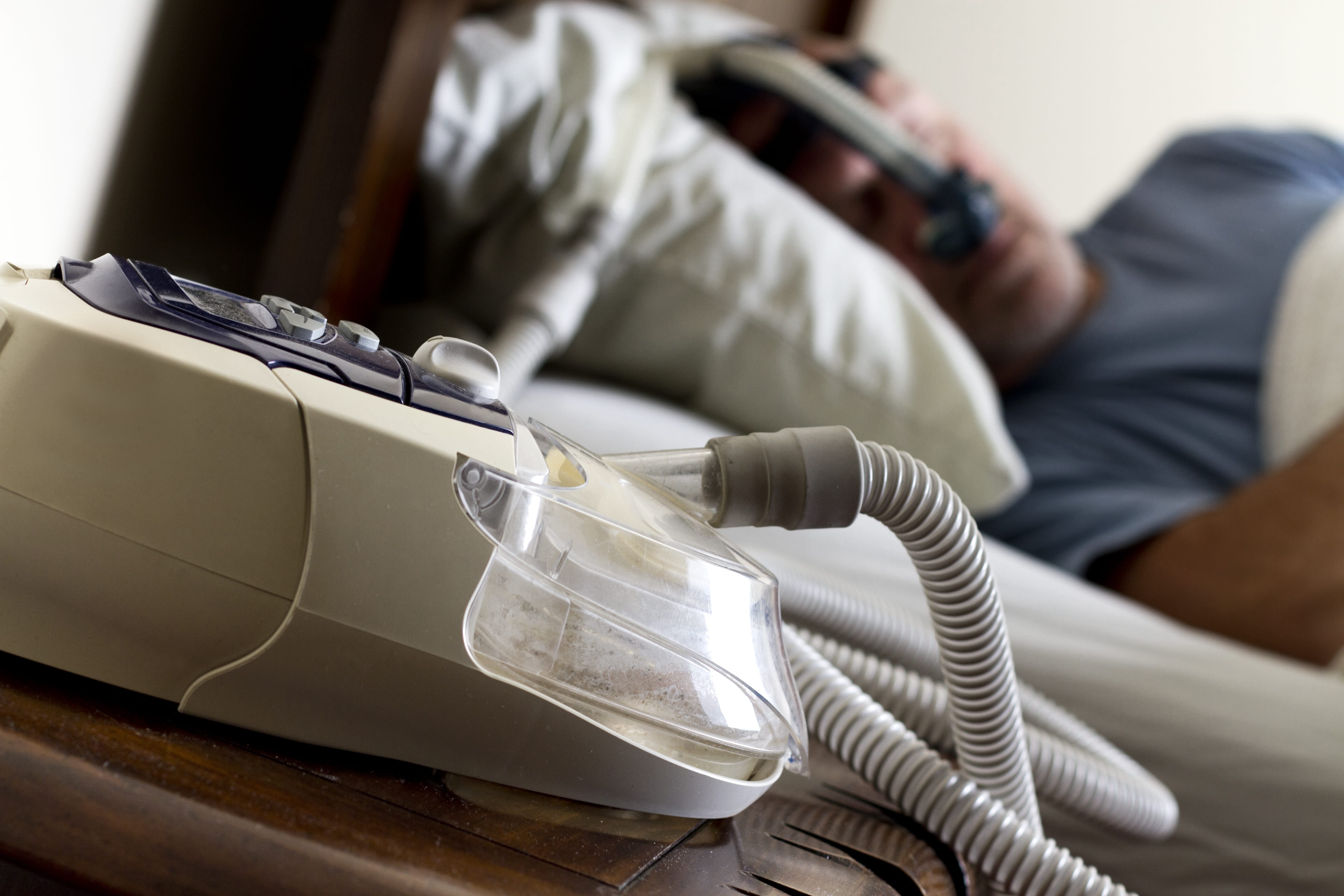
Photo: Getty Images
On March 13, 2018, I had the opportunity to interview three clinical experts in the field of sleep apnea on Sirius XM channel 111’s “The Business of Health Care” program. The experts were Dr. Ana Krieger, medical director of the Weill Cornell Center for Sleep Medicine; Dr. Richard Schwab, medical director at the University of Pennsylvania’s Center for Sleep Disorders; and Dr. Jeff Silver, from the Harvard University Medical System. They were able to answer some of the most important questions about sleep apnea.
What is obstructive sleep apnea?
Obstructive sleep apnea (OSA) is characterized by a recurrent collapse of the upper airway during sleep. It is estimated that 15 to 25 percent of men, and 5 to15 percent of women over the age of 30 in the United States suffer from sleep apnea. OSA is formally diagnosed by measuring the number of apneas (temporary cessation in breathing) and hypopneas (slow or shallow breathing) per hour of sleep. It is measured at a sleep center using the apnea-hypopnea index (AHI). More than 15 of these types of A-H disturbances in an hour is classified as OSA. Moreover, it is an underdiagnosed condition (approximately 20 percent of the population is being treated or know they have it) and is associated with hypertension, heart failure, atrial fibrillation, diabetes, and stroke. Commonly, during an A-H episode, the body stops breathing, sending a signal to the brain to restart breathing. This in turn sends adrenaline coursing through the body creating oxidative stress, metabolic dysregulation, and endothelial dysfunction.
What is interesting about OSA is that it cuts across many different specialties, such as neurology, pulmonology, dentistry, otolaryngology, and critical care medicine. So when a patient is assessed for OSA, there is a lot of cross-disciplinary interaction, and a collaborative approach is used. This is a good thing considering medicine has traditionally focused on individualized treatment, and has not been as cross-disciplinary.
How is it treated?
The main therapy for OSA is continuous positive airway pressure (CPAP). The CPAP device is a mask connected to a portable pump which forces open the collapsed upper airway. If CPAP is consistently used, it significantly reduces the number of AHI’s. Meta-analyses of randomized controlled trials have demonstrated mean reductions in systolic and diastolic heart rate measurements from the use of CPAP. However, the main issue with CPAP is adherence, as upwards of 40 percent of those prescribed the CPAP do not use it. Other options for treatment include mandibular advancement devices (surgical treatment to advance the tongue away from the airway), weight loss, and exercise.
It is undertreated—why?
Many patients are seen by primary care physicians who are not well trained in the diagnosis of OSA. In addition, sleep centers are generally housed at academic medical centers, making them less accessible. As a result, the condition is not adequately diagnosed. Furthermore, the CPAP is not as user-friendly as it could be. The issues in the current forms of treatment present business opportunities for those in the OSA space, and are a reason why Wall Street values companies operating in this space, such as RedMed.
So, how do you get a good night’s sleep with or without OSA? First, go to sleep at the same time every night. Don’t drink alcohol prior to going to bed, as it fragments your sleep. Finally, the most difficult advice: Don’t continually hit the snooze button when you trying to get up in the morning, as the best sleep you can get occurs in the early morning hours. Instead, set your alarm clock for the time you actually want to get up.


























